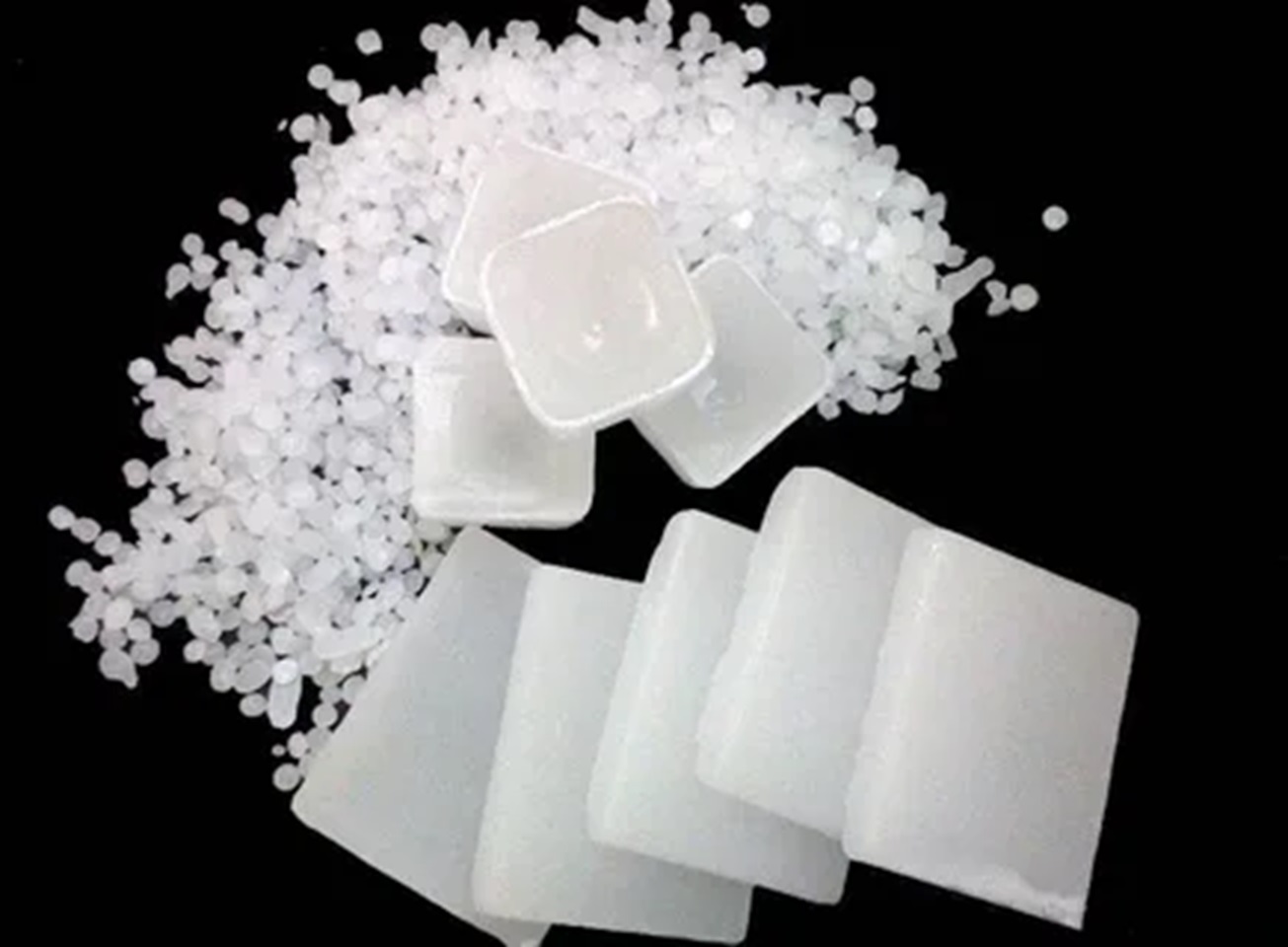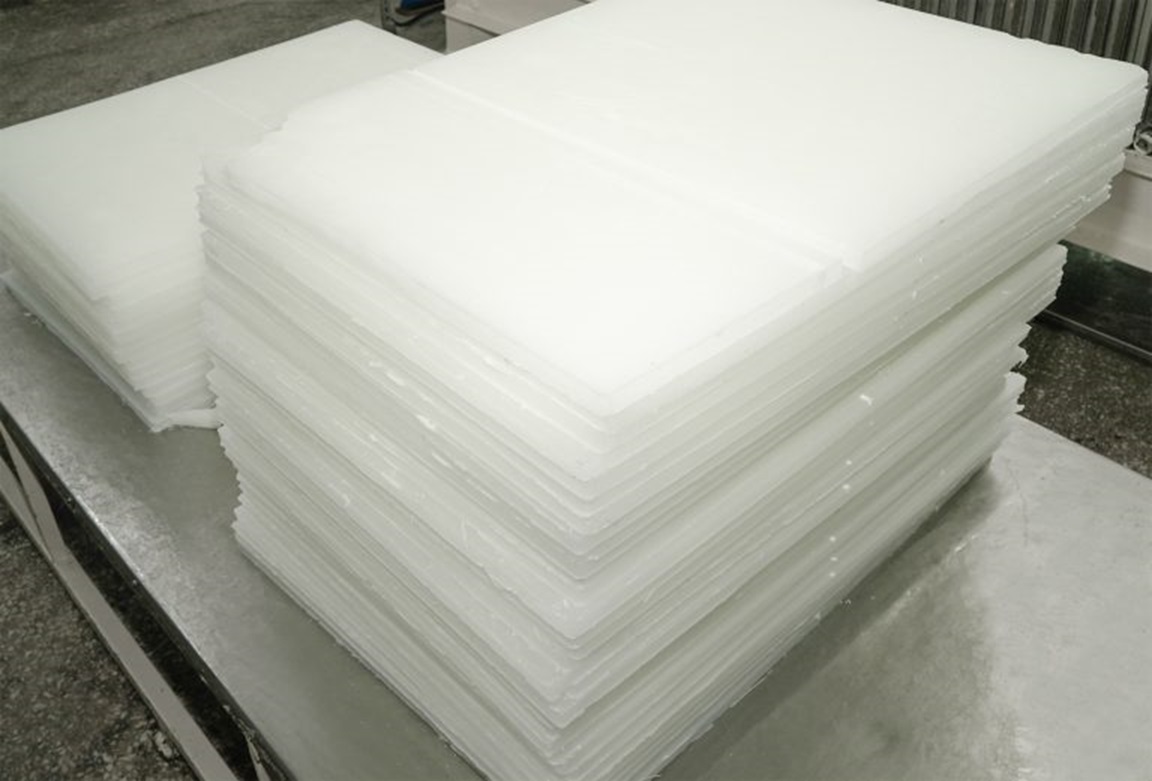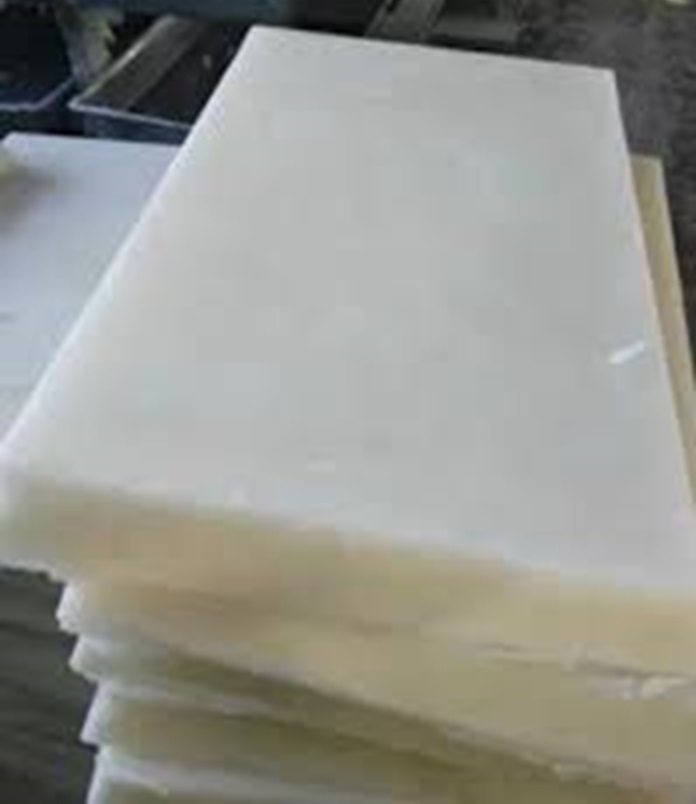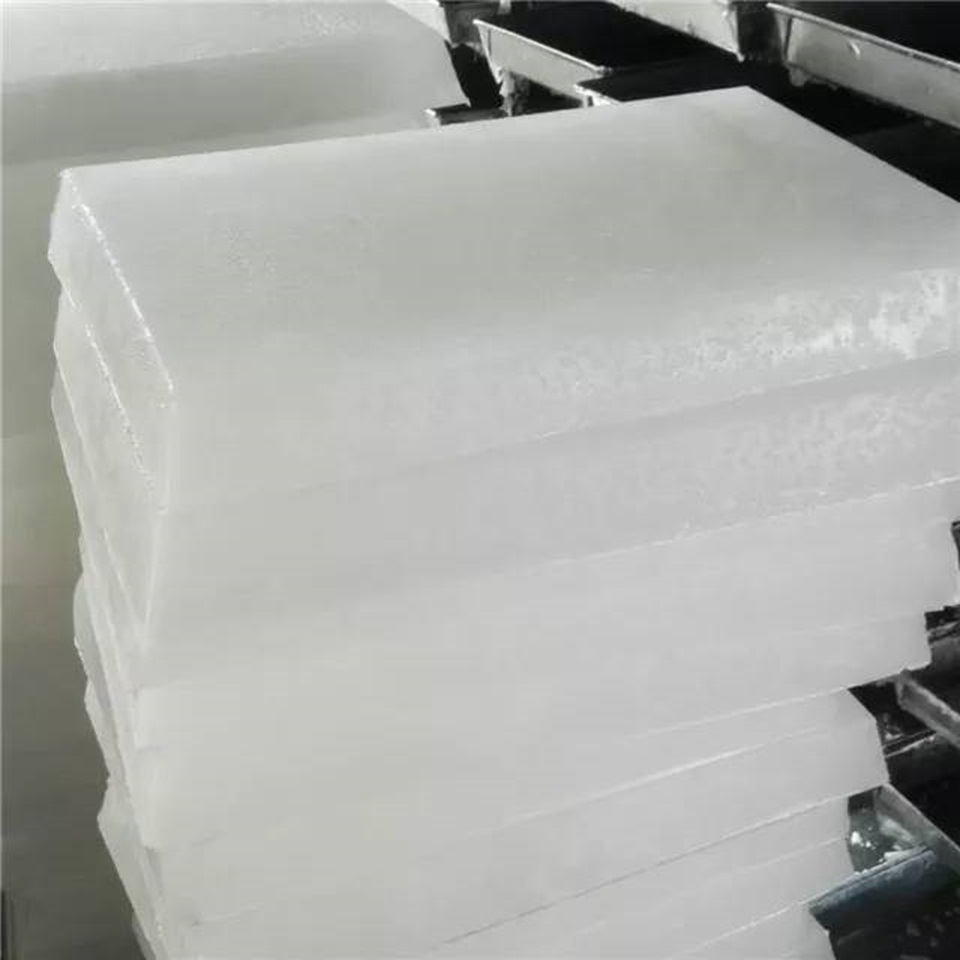We unleash your business potential by maximize the business innovation.
Send EmailFully Refined Paraffin Wax, Paraffin Wax, Paraffin Wax, Mineral Hydrocarbon Wax, Hard Paraffin, Synthetic Wax, 8002-74-2, 308069-08-1
🧪 CAS No: 8002-74-2
Chemical Name: Paraffin Wax
EC Number: 232-315-6
Molecular Formula: CₙH₂ₙ₊₂ (n ≈ 20–40)
Form: White to off-white solid, odorless, tasteless
Melting Point: 58–62 °C (ASTM D87)
Boiling Point: ~322 °C
Density: ~0.82 g/cm³ at 20 °C
Flash Point: ~113 °C
Solubility:
-
Insoluble in water
-
Soluble in chloroform, ether, volatile oils
-
Slightly soluble in ethanol Storage Conditions: Store below +30 °C, away from ignition sources
🔧 Industrial Applications
-
Textile & Leather: Hydrophobic coatings, fiber lubrication
-
Plastisol & PVC: Density control, rheology modifier
-
Cosmetics & Pharma: Base for ointments, chewing gum, tablet coatings
-
Food Contact: Approved under FDA 21 CFR 175.210 & 178.3800
-
Polishes & Coatings: Shoe polish, floor wax, automotive wax
-
Packaging & Paper: Moisture barrier, gloss enhancer
-
Electrical: Dielectric applications (ε ≈ 2.1–2.5)
⚠️ Safety & Handling
-
GHS Classification:
-
Symbol: ⚠️ GHS07
-
Signal Word: Warning
-
Hazard Statement: H319 – Causes serious eye irritation
-
-
Precautions:
-
Use gloves and eye protection
-
Avoid dust inhalation
-
-
Toxicity:
-
Oral LD₅₀ (Rabbit): >5000 mg/kg
-
Dermal LD₅₀ (Rabbit): >3600 mg/kg
-
🧩 Regulatory Notes
-
Listed in ECHA underSubstance Information – Paraffin waxes and Hydrocarbon waxes
-
FDA-approved for indirect food contact
-
Commonly used in European Pharmacopoeia (EP) and United States Pharmacopeia (USP) reference standards
🧪 CAS No: 308069-08-1
Chemical Name: Mineral Hydrocarbon Wax Synonyms:
-
Paraffin Wax
-
Mineralhydrocarbonwax
-
Hard Paraffin
-
Synthetic Wax (varied grades)
Molecular Formula: C₂₁H₂₇NO₃ (isomeric form)
EC Number: 232-315-6
Physical Form: White, wax-like solid
Density: ~0.82 g/cm³ at 20 °C
Melting Point: 47–64 °C
Boiling Point: ~65–70 °C (varies by grade)
Refractive Index: nD20 ≈ 1.45
Flash Point: ~200 °C
Solubility: Insoluble in water; soluble in non-polar solvents
Stability: Chemically inert, stable under normal conditions
Storage Recommendation: Cool, dry conditions (+4 °C ideal)
🔧 Industrial Applications
-
Textile & Leather: Water-repellent coatings, fiber lubrication
-
PVC & Plastisol: Rheology modifier, density control agent
-
Hot-Melt Adhesives: Enhances crystallinity and setting speed
-
Cosmetics & Pharmaceuticals: Base for ointments, chewing gum, tablet coatings
-
Polishes & Coatings: Shoe polish, floor wax, automotive wax
-
Explosives & Matches: Binder and fuel component
-
Paper & Packaging: Moisture barrier and gloss enhancer
⚠️ Safety & Handling
-
GHS Classification:
-
Signal Word: Warning
-
Hazard Statement: H302 – Harmful if swallowed
-
-
Precautions:
-
Avoid ingestion and inhalation of dust
-
Use protective gloves and ventilation during processing
-
-
Decomposition Products: May release NOₓ and HCl when overheated
🧪 Paraffin Wax
CAS Numbers: 8002-74-2 / 308069-08-1
Molecular Formula: C₂₁H₂₇NO₃ (representative isomer)
EC Number: 232-315-6 F
orm: Solid or liquid wax, white to off-white
Origin: By-product of base oil refining in petroleum refineries
🏭 Production Process
Paraffin wax is derived from slack wax—a mixture of oil and wax obtained during the refining of lubricating oils. The production involves:
-
Dewaxing: Oil is removed via crystallization using solvents like ketones
-
Filtration: Separation into solid (wax + solvent) and liquid (oil + solvent) streams
-
Distillation: Solvent recovery yields two products:
-
Product Wax (Press Wax)
-
Foots Oil
-
-
Refining Grades:
-
Semi-refined: Moderate oil content
-
Fully refined: <0.5% oil, high purity
-
-
Optional Treatments: Bleaching, deodorizing, blending for desired melt point and penetration
🧬 Classification
Paraffinic products are divided into two main categories:
| Type | Description | Structure |
|---|---|---|
| Paraffin Wax (Macrocrystalline) | High-purity alkanes, chemically inert, hydrophobic | Linear, low branching |
| Microcrystalline Wax | Higher viscosity, flexible, adhesive | Branched, amorphous |
🔧 Industrial Applications
Paraffin wax is used across multiple sectors:
-
Hot-Melt Adhesives
-
PVC & Plastisol Production
-
Textile & Leather Coatings
-
Explosives & Ammunition Lubricants
-
Candle Manufacturing
-
Paper & Packaging Barrier Coatings
-
Printing Inks & Paints
-
Matchstick Production
-
Rodent Bait Carrier
-
Fishing Net Protection
-
Rubber & Tire Industry
🧪 Specialty & Technical Uses
-
Histology & Pathology: Tissue embedding medium
-
Antiozonants: Rubber protection via surface migration
-
Food Grade Applications:
-
Confectionery gloss coating (non-digestible)
-
Cheese rind protection (e.g., Edam)
-
Jar and bottle sealants
-
Chewing gum additive
-
-
Casting & Investment Molding:
-
Modified paraffin blends for lost-wax processes
-
-
Cosmetics & Toiletries:
-
Moisturizers, Vaseline-type bases
-
-
Thermal Applications:
-
Phase change material for energy storage
-
Neutron shielding in nuclear labs
-
-
Electronics:
-
Encapsulation of transformers, inductors, guitar pickups
-
-
Rocket Propellants:
-
Binder and fuel in hybrid motors
-
-
Printing:
-
Solid ink blocks for thermal printers
-
-
Art & Therapy:
-
Wax carving, paraffin baths
-
-
Miscellaneous:
-
Surfboard, ski, skateboard wax
-
Wood polish
-
Lubricant for bicycle chains
-
Nitrate detection in forensic tests
-
Fuel for fire breathing
-



